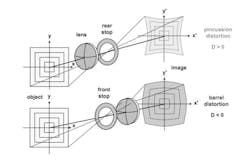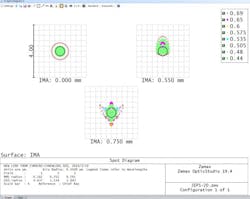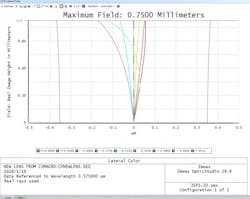Enhancing Blood Observation: A Case Study on the 20X Objective Lens & Tube Lens
Designed and optimized for a renowned medical company’s exploration of human blood, the 20x objective lens offers exceptional resolution critical for biological analysis. Its high magnification capabilities enable the clear visualization of minute cellular structures. This lens is integral to a customer application aiming to delve deeply into subtle changes in human blood, revealing potential disease indicators and physiological processes. By employing advanced microscopy techniques, this study seeks to analyze blood cell morphology, quantity, and trajectory, providing invaluable insights for clinical diagnosis and treatment. This endeavor underscores the pivotal role of biological microscopy in advancing medical science, with our engineering team dedicated to optimizing optical performance for maximum effectiveness.
Overview
Collaborating with Shanghai Optics, this medical research project utilizes a 20X objective lens to investigate human blood samples, focusing on single-cell genetic expression and immune profiling. Leveraging the lens’s high magnification capabilities allows for meticulous analysis at the single-cell level, providing a comprehensive understanding of genetic expression patterns and immune responses. This methodological approach contributes significantly to the advancement of single-cell biology and genomics.
Key Design Perspectives
- Distortion Control: Addressing various distortions is essential for accurate imaging across the entire field of view. Our design incorporates measures such as adding a front stop to reduce distortion at image boundaries. With decades of optical engineering experience, Shanghai Optics ensures outstanding performance while maintaining production uniformity and efficiency. Balancing Resolution and Magnification: Achieving high magnification without compromising resolution is crucial. Through meticulous design processes, we enhanced resolution by customizing multiple lenses to reduce aberrations, ultimately improving the clarity of microscopic details. Specialized coating techniques further enhanced performance by minimizing light reflection and scattering, resulting in larger, clearer fields of view.
Lens Performance and Affordability
Through optimization, our 20X objective lens surpasses equivalent models in image quality and affordability. Advanced manufacturing processes and optimized components deliver higher resolution, making it an invaluable tool for scientific research and medical diagnosis. By reducing production costs without compromising quality, Shanghai Optics offers a more economical choice for customers, ensuring accessibility without sacrificing performance.
Our meticulous optimization process results in an objective lens that excels in resolution and magnification while minimizing distortion. This cost-effective solution contributes significantly to advanced biological blood observation, aiding in the early detection of disease indicators and their exacerbating factors. Shanghai Optics’ ability to tailor systems to meet customer needs underscores our commitment to providing unique, high-quality optical components for diverse applications.
Do not hesitate to contact Shanghai Optics today. We’d be more than happy to discuss your projects and how best they can become a success.





